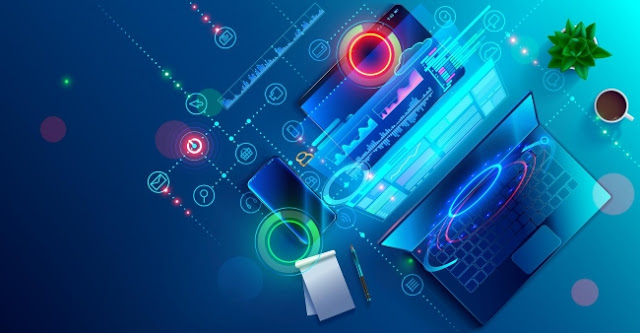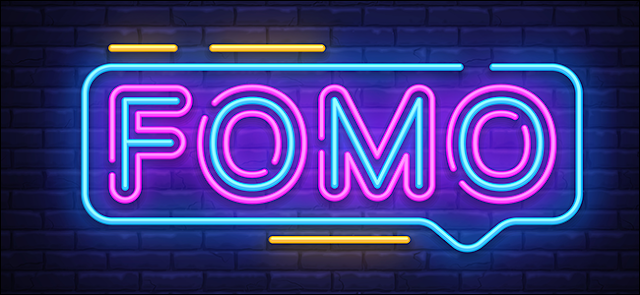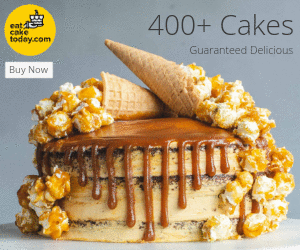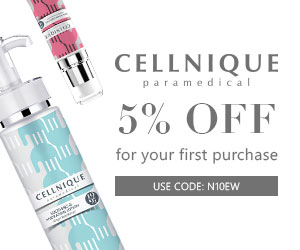Consumer psychology is a branch of social psychology concerned with the market behaviour of consumers. Consumer psychologists examine the preferences, customs, and habits of various consumer groups. Their research on consumer attitudes is often used to help design advertising campaigns and to formulate new products.
Consumer psychology seeks to explain human, or consumer behaviour, in two basic ways: what the consumer wants and what the consumer needs. For example, if a person lives in New York, that person needs a winter coat to survive the cold outside. But why the person buys a particular style or color and why a particular choice is made.
In the business world, consumer psychology research helps firms to improve their products, services and marketing strategies in order to bolster sales.
The Science of Consumer Behaviour
Consumer psychology employs theoretical psychological approaches to understanding consumers. This field is also known as the psychology of marketing.
Consumer psychologists study a variety of topics including:
√ How consumers choose businesses, products, and services?
√ The thought processes and emotions behind consumer decisions.
√ How environmental variables such as friends, family, media, and culture influence buying decisions?
√ What motivates people to choose one product over another?
√ How personal factors and individual differences affect people's buying choices?
√ What marketers can do to effectively reach out to their target customers?
What Consumer Psychologists Do?
Consumer psychologists investigate how the decision-making process, social persuasion, and motivation influence why shoppers buy some things but not others. These professionals play a critical role not only in helping businesses understand what their customers want and need but also in helping sellers promote and market their products and services to buyers.
Conduct Market Research
Businesses need to understand their consumers in order to develop products and marketing campaigns that appeal to their target audience, consumer psychologists often spend a great deal of time learning more about what makes shoppers tick. This often involves first figuring out the target audience for a particular product including the gender, age, and socioeconomic status of the typical shopper.
Next, the consumer psychologist might begin researching the types of products and marketing messages that appeal to these types of buyers.
Research Consumer Attitudes and Behaviours
Consumer psychologists often conduct research to learn more about buyer behavior. Common research methods used by these professionals include experiments, online surveys, focus groups, direct observations, and questionnaires.
In a survey, consumers are often asked to describe their past shopping behaviour, factors that influenced their decision-making, and their future buying plans.
Researchers also typically gather details about each respondent's sex, age, race, educational history, and current financial situation. This type of information can be very useful since it allows researchers to look for patterns and learn more about who buys certain products.
For example, using a survey might allow researchers to discover that women between the ages of 30 and 45 who have a household income between $50,000 to $100,000 are most likely to buy a particular product or service. By knowing this, they can then begin designing marketing campaigns aimed at this target audience.
Common Factors Influencing Consumer Behaviour
1. Marketing Campaigns
Marketing campaigns influence purchasing decisions a lot. If done right and regularly, with the right marketing message, they can even persuade consumers to change brands or opt for more expensive alternatives. A good marketing message can influence impulse purchases and bring about a great shift in market shares of competitive markets.
2. Economic Conditions
Consumer spending decisions are known to be greatly influenced by the economic situation prevailing in the market. A positive economic environment is known to make consumers more confident and willing to indulge in purchases irrespective of their personal financial liabilities.
3. Personal Preferences
At the personal level, consumer behaviour is influenced by various shades of likes, dislikes, priorities, morals and values. The personal view and opinion of the consumer pertaining to style and fun can become the dominant influencing factor. Though advertisement can help in influencing these factors to some extent, the personal consumer likes and dislikes exert greater influence on the end purchase made by a consumer.
4. Group Influence
Group influence is also seen to affect the decisions made by a consumer. The primary influential group consisting of family members, classmates, immediate relatives and the secondary influential group consisting of neighbours and acquaintances are seen have greater influence on the purchasing decisions of a consumer.
5. Purchasing Power
Purchasing power of a consumer plays an important role in influencing the consumer behavior. The consumers generally analyze their purchasing capacity before making a decision to buy and products or services. The product may be excellent, but if it fails to meet the buyers purchasing ability, it will have high impact on it its sales. Segmenting consumers based on their buying capacity would help in determining eligible consumers to achieve better results.
Consumer Psychology Tactics that Influence Behaviours
1. Reciprocity
Reciprocity is a concept developed from the basic idea: If you give me something of value, I’ll give you something in return.
A powerful way to put the reciprocity principle into practice is through content marketing. Offering consumers valuable content including educational tips and thought leadership. This is an ideal way to build brand trust and increase conversions, asking consumers to follow, believe in, and purchase from your brand in return.
Another way to put this tactic to the test is through rewards. Giving consumers something to urge them along the path to purchase. Free delivery and financial incentives or rewards such as coupons and discounts are the top purchase drivers among today’s consumers, making these essential tactics no brand can afford to ignore.
2. Commitment & Consistency
Being consistent means developing a brand identity that people can relate to, and sticking to it.
When you choose a social cause to align with and commit to, you ask your audience to believe in your consistent dedication to this cause. This means positioning your brand in a certain way so that consumers perceive you as an advocate for change, taking a stand for something bigger.
When you ask consumers to subscribe to your blog, you make a commitment to your audience to deliver high quality, valuable content on a consistent basis. In return, you ask your consumers to make a small commitment (providing data, for example). Following this theory, this small commitment should urge them to continue doing so.
3. Authenticity
For today’s consumers, brands are not only there to reduce risk when it comes to buying, they’re there to shape and validate our self-perceptions.
The best examples of authentic marketing use insights to frame their brand around their audience, giving them something to connect with and relate to. User-Generated Content (UGC) is a great tactic to use, encouraging consumers to get involved in, and shape, your campaigns.
One example of a brand getting this right is Coca-Cola through their ‘Share a Coke’ campaign in which urging consumers to use social media as a platform to share their ideas around what labels they want to see, resulting in one of the longest-running UGC campaigns of all time.
4. Personalization
According to a study from the University of Texas, our preference for personalized experiences comes down to two key factors: a desire for control and information overload.
Smart brands are tailoring their marketing to their consumers, making them feel more in control and helping them to bypass the sea of irrelevant information at their fingertips and get to what they actually value.
Getting personalized means tailoring your marketing, your products and your services to your consumers.
Once you have the data and insights you need to create a pen portrait of your consumer, you can start using what you know in much the same way.
O2 is one brand that shows the value in personalization, who used data based on location and device to recommend the best tariff offer to consumers, resulting in a 128% increase in click-through rate.
5. The Psychology of Emotion
Emotions drive consumer behaviour. Every decision we make is based on emotion.
Studies have shown how, based on emotions, our brains decide what to share and who to trust, which makes sense based on the logic that we feel first, and think second.
Leading your marketing with emotion may sound straight-forward, but for this method to work, you need to know which emotions to tap into. This will depend on what you want to achieve with each campaign or content type.
Research by Jonah A. Berger, found that the more positive the message, the more likely it is to go viral. One example of a brand cleverly using emotion to drive its message is Nike. As part of its continuous effort to promote equality and diversity, these campaigns inspire people to take a stand for something worthwhile.
6. The Psychology of Colour
The psychology of colour as a persuasive tool has heeded much attention. Research on the topic reveals up to 90% of snap judgement made about products can be made on color alone.
Red is a color largely synonymous with evoking strong emotions and encouraging impulse buying. One used by leading brands including Coca-Cola, McDonald’s and Virgin.
Brands are putting this into practice not only from a branding perspective to align with their tone of voice and shape their identity, but to optimize campaign effectiveness.
By testing your campaigns and wider marketing activity with color to see what resonates best with your audience, you can see significant results driving more appeal.
7. Convenience and Comfortable
When it comes to conversions, then we all have to accept the fact that convenience is King. People love comfort and brands which provide their customers comfort while shopping have greater chances of conversions. Some of the ways to make your consumers feel comfortable are provided below:
■ Have a neat website with the least amount of complexity.
■ Provide sufficient information about individual products so there's no need to research further.
■ Offer free trials and money back guarantee.
■ Sending them personalized emails for the latest offers.
■ Use customer testimonials as a weapon to increase trust. Marc Zuckerberg has rightly said, "nothing influences people more than a recommendation from a trusted friend."
8. Make Use of the Pricing Strategies - The Decoy Effect
I’ll get this bundled package because it’s cheaper.
Dan Ariely, Professor of Psychology and Behavioral Economics at Duke University in his famous TED talk referred to an ad from the Economist which offered subscription packages in the below rates:
a. Online subscription: $59
b. Print subscription: $125
c. Online and print subscription: $125
Any consumer having the above pricing options would go on and choose the 3rd one, isn't it? Because it provides the best value for money. This means, always have 3 options in your landing page instead of just 2. The 3rd one is your decoy, pushing the customer to the price point you had in mind. Its task is to make the other options look good by delivering less for more.
9. Invoke Urgency With the Proper Call to Action
Scarcity and urgency are some great ways to persuade the consumer to take action. Urgent situations cause us to suspend deliberate thought and to act quickly.
Call to Action allows the consumer to take the desired action after the sense of urgency has been created. Invoking urgency only had a noticeable effect when follow-up instructions were given.
Urgent situations force the human brains to make decisions almost instantly and this helps the marketers to boost sales. Here are some ways to create urgency in the minds of the customers:
■ Set a deadline. Discounted tickets, offers and freebies all should have a deadline.
■ Use words like only 5 left in stock, few spots left or limited edition to allow the buyer to take immediate action.
■ A ticking clock on the landing page can be used which is a visual scarcity bias inducer.
■ Making use of loss aversion technique by using words that targets the fear of losing something rather than gaining something.
10. Incentivisation
Rewards and incentives can be used to persuade people to take an action. Companies can use free e-books, free guides, and other freebies to get your email address and build a relationship. This ultimately could lead you to become a customer down the road. In retail, incentives like free competition entries, 20% extra free, free spoons with cereals, free pint glasses with 8 packs of beer etc exist. They all serve to enhance the customer relationship, create engagement or convince potential customers to buy to get the freebie.
Increasingly governments are looking at how to use psychological nudges to get corporations to behave more ethically. Initiatives like carbon taxes for large-scale polluters serve as a reward/punishing system to encourage more environmentally friendly behaviour. Competitions where companies get named as the most “Green” also help.
11. Scarcity
It’s a limited edition! I should hurry and buy one!
The scarcer an item is the more valuable it becomes.
Many marketers are awed by how customers jump onto a specific offer just because it’s a “limited edition”. Regardless of whether or not they personally need the product, as long as there’s a huge opportunity to own something unique and special, people tend to get their hands on it no matter what. Scarcity marketing is effective as consumers fear that they will miss out on what’s on offer, thus losing their freedom of choice.
Some of the ways marketers use this idea can be through:
■ Black Friday sales. Originally, Black Friday was the name given to sales that took place the day after Thanksgiving. However, it’s fast becoming a global trend that attracts bargain hunters around the world. For decades, retailers have managed to create a sense of scarcity around highly-discounted, popular products leading to empty shelves especially during the holiday shopping season.
■ Limited product offering. Ever gone in search of cheap flights, only to see that there are 3 tickets left? By seeing that there are only a few tickets left, you’re likely to make more of a swift decision with your purchase, compared to if were 300 tickets left at the sale price.
■ Exclusive access. When it comes to upgraded membership options, brands are able to make their product offering feel premium and exclusive. Whether it’s VIP access to a special service or being given extra features in a product, having access to something that isn’t readily available to others allows customers to feel like they are in possession of something scarce, and thus special.
12. Social Proof Marketing
Professor of psychology and marketing namely Robert Cialdini, believes that when humans are unsure what to do, they look to those around them for advice on what should be done.
Social proof marketing goes one step further than simple word of mouth. Instead, it calls on the persuasive powers of experts, celebrities and user reviews as a way to increase our trust in the product or service.
Social proof comes in the form of reviews and testimonials, as well as the number of social media followers and engagement.
Social proof is a smart psychological marketing trick because it helps to pre-sell your audience. When people see that others trust and like you, they are more compelled to take action when they see one of your social media posts. That action might be to learn more about your service or to purchase your product.
Below are other types of social proofing you can try when trying to promote your business:
■ Use an expert. Experts have spent countless hours perfecting their craft and becoming an authority in their specific domain. And so, when they promote or are seen in association with a product, it’s likely that followers who have that specific need, will listen to their recommendation. An example of expert social proofing could be hosting a live Q&A on your Facebook page, or getting that expert to write a guest post on your blog.
■ Have a celebrity endorse your product. When it comes to endorsing your product, or service, celebrities, and social media bloggers hold influence amongst their large followings. An example of endorsements that many brands use is to enlisting A-list celebrities for a campaign, or simply gifting your product to an influencer that holds power in an audience that you would like to target and hoping they feature it on their social media profiles.
■ Give your users a voice. Often, the best marketing is an organic word of mouth. Whether it’s a Google review or a five-star rating on the app store, the truth is, many soon-to-be customers use these recommendations as a guide for the true performance of your business. Research shows that 91% of people regularly or occasionally read online reviews, and 84% trust online reviews as much as a personal recommendation.
13. Loss Aversion Marketing
Loss aversion theory points out that once someone has something, they realy don't like to lose it. People don't like to lose what they've already gained.
Some loss aversion marketing strategies include:
■ Trial offers. Research tells us that we value items we own more than those we don’t. And so by offering your customers the opportunity to own the product even if it’s temporary. You are allowing them to potentially feel the loss of not owning the item.
■ Creating a limited resource. One way to entice customers into making a purchase is to inform them of the scarcity of your product. Commonly used in e-commerce businesses, brands often create a certain amount of stock and let the customer know if there’s only a few more available.
■ Offering a gift with purchase. Whether it’s free shipping, a discount code when a customer spends a certain amount, or free gift wrapping, the idea of losing a free gift can often serve as a strong incentive for convincing your customers to make a purchase that they were originally on the fence about.
14. Create a Sense of FOMO
The fear of missing out (FOMO) is effective. Marketers have been using this psychological trigger very smartly with techniques such as “countdown timers” that they display near a product that is on a time-bound sale.
Several ways to create FOMO on your store include:
■ Using on-site notifications to continually show the shopper how fast the products are being sold or how many people have availed the deal.
■ Set up countdown timers and make them static across all pages to let shoppers know how much time they have left to grab the discount.
■ Makes sure you notify the shoppers of a time-sensitive discount in a PROMPT manner. Apart from emails, leverage the timeliness of web push notifications and Messenger marketing.
15. Eye-Catching Photos
Just like how the human brain reacts positively to urgency, it also acts positively to sensory delight. That is why aesthetics and presentation matters. Statistics point out that nearly 93% of shoppers make a purchase because of a product’s visual appeal.
You have to make the products visually appealing for your shoppers to nudge them to even consider wish-listing the product or adding it to the cart. You could do this by adding product videos to your product page and enhancing product pictures on your store.
Edited by: 浪子
Bibliography
Kendra Cherry. (2019). The Psychology Behind Consumer Behavior. Retrieved from https://www.verywellmind.com/what-is-consumer-psychology-2794899
Encyclopaedia Britannica. (n.d.). Consumer Psychology. Retrieved from https://www.britannica.com/science/consumer-psychology
Encyclopedia. (2019). Consumer Psychology. Retrieved from https://www.encyclopedia.com/medicine/encyclopedias-almanacs-transcripts-and-maps/consumer-psychology
Lorna Keane. (2017). Why Consumer Psychology Matters: The Marketing Tactics that Work. Retrieved from https://blog.globalwebindex.com/marketing/consumer-psychology/
Workspace. (n.d.). Introduction to Consumer Psychology. Retrieved from https://www.workspace.co.uk/community/homework/marketing/introduction-to-consumer-psychology
Joydeep Bhattacharya. (2016). 5 Surefire Consumer Psychology Tricks to Increase Conversions. Retrieved from https://www.searchenginepeople.com/blog/16073-consumer-psychology-conversion-optimization.html
Kevin O Leary. (2018). 6 Psychological Marketing Tactics to Attract New Customers. Retrieved from http://bxtvisuals.com/psychological-marketing-tactics/
Christine de Guzman. (2016). 6 Proven-Effective Psychological Marketing Tactics. Retrieved from https://creately.com/blog/marketing/psychological-marketing-tactics/
Nicole Singh. (n.d.). The Definition of Marketing Psychology and How to Use It. Retrieved from https://www.canva.com/learn/definition-marketing-psychology-use/
iResearch Services. (2018). 5 Common Factors Influencing Consumer Behaviour. Retrieved from https://www.iresearchservices.com/5-common-factors-influencing-consumer-behavior/
Consumer Behavior in Marketing – Patterns, Types, Segmentation. (2019). Retrieved from https://www.omniconvert.com/blog/consumer-behavior-in-marketing-patterns-types-segmentation.html
Ginny Mineo. (2017). Marketing Psychology: 10 Revealing Principles of Human Behavior. Retrieved from https://blog.hubspot.com/marketing/psychology-marketers-revealing-principles-human-behavior
Dayana Mayfield. (2019). 11 Psychological Marketing Tactics Perfect for Social Media. Retrieved from https://mavsocial.com/psychological-marketing-tactics-for-social-media/
Vanhishikha Bhargava. (2019). How to Use Consumer Psychology to Turn Shopify Store Visitors Into Customers. Retrieved from https://blog.pushowl.com/use-consumer-psychology-to-turn-shopify-store-visitors-into-customers/
Understanding the Psychology Behind Consumer Behaviours
 Reviewed by 浪子
on
January 10, 2020
Rating:
Reviewed by 浪子
on
January 10, 2020
Rating:
 Reviewed by 浪子
on
January 10, 2020
Rating:
Reviewed by 浪子
on
January 10, 2020
Rating:

































